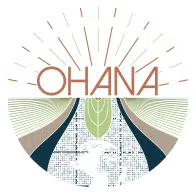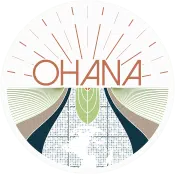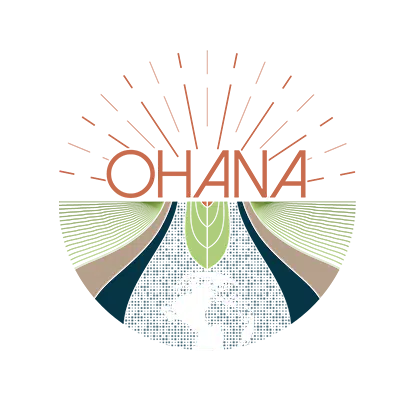
Widening the Conversation on Microfibres: An Interview with Industry Organisations EOG and FESI
Over the last few years, discussions around microplastics – tiny particles released when we wash synthetic clothing – have become increasingly urgent.
But fibre shedding in textiles is a complex problem – and it’s much bigger than microplastics.
Our latest interview highlights the need to take a step back and understand what the risks are and how to measure them. By taking a holistic approach to fibre fragmentation, the textiles industry hopes to drive policy that will improve sustainability and minimise harm to aquatic environments at every stage of the product life cycle.
We spoke with representatives of two major industry groups, European Outdoor Group (EOG) and Federation of the European Sporting Goods Industry (FESI), to find out how.
Ohana’s new interview series offers insights and practical tips on how a range of different companies, industry groups, and NGOs engage with EU policymaking. Take a look at our recent interview with Sympatex and conversation with the Policy Hub.
Want someone with deep experience and connections in the EU to help guide your sustainability strategy? Get in touch!
Introducing the EOG & FESI
The European Outdoor Group is a platform for outdoor brands. Their vision is “to do global, profitable business in a way that gives back more than we take.” We spoke with Katy Stevens, Head of Corporate Social Responsibility and Sustainability at EOG, to learn how the group is engaging with researchers and regulatory bodies to promote science-based methodologies on fibre fragmentation.
Jerome Pero, General Secretary at the Federation of the European Sporting Goods Industry (FESI) also joined our conversation to provide insights on the process of building shared, accurate knowledge on fibre fragmentation as the foundation of industry practice and EU policy. FESI represents the interests of the sporting goods industry, seeking to promote initiatives that benefit the sector, EU citizens, and society as a whole.
Filling the knowledge gap
Both EOG and FESI participated in the EU Commission’s initial conversations around microplastics a few years ago. But quickly, Jerome says, “We came to the conclusion that there were huge knowledge gaps on microplastics and what the actual emissions are for textile materials.”
Without understanding what the risks were and how to measure them, it was impossible to develop robust policy governing microplastics and other particles released from textiles. As Jerome puts it, “we were trying to build a house without any foundations, starting with the roof.”
Right now, Katy says, “we don’t actually know much about the risk.”
The EU’s Chief Scientific Advisors group says that while there’s no evidence currently available that shows a widespread risk to humans or the environment from microplastics pollution, there are grounds for concern and precaution.
As Katy notes, much more in-depth research is needed to understand risk levels overall, as well as the different risk profiles of different fibres.
The Cross Industry Agreement
“We realized,” Katy says, that “before we could even start to understand the problem, we had to be able to measure it.” Lots of research was being done on microplastics and fibre shedding – but the studies used different methodologies and test methods, making them difficult to compare. The research landscape was uncoordinated and offered no coherent way of measuring textiles for emissions.
Through the Cross Industry Agreement (CIA), EOG and FESI came together with other major industry groups to remedy the situation. The Cross Industry Agreement is a voluntary collaboration of industry and research organisations working together to prevent microfibre release during the washing of synthetic textiles.
“We basically got together all the researchers, test labs, and universities currently working on methods for detecting microplastic emission,” Jerome says. “We coordinated their efforts and pushed for alignment so that the end result was a harmonised, scientific test method.”
The method has now been developed, tested and shared with the European Committee for Standardisation (CEN), who are now finalising a final test method. The next step is to transform this methodology into an ISO standard.
“This will help the textile industry in choosing the correct way to select materials and build garments, and it will also help policymakers to identify where microplastics are actually released at different stages, in manufacturing, in wearing, in wastewater treatment and so on.” says Jerome.
Widening the conversation
Right now, though, Jerome and Katy agree that the conversation around microplastics, which only shed from synthetic fibres, can be reductive.
Without clear data, it’s all too easy to panic and look for silver-bullet solutions like banning synthetic fibres or adding filters to all washing machines.
But, Katy says, we need to let the science lead and move the narrative away from a narrow focus on microplastics and synthetic fibres.
“Fabrics and textiles are losing fibres all the time,” says Katy, “and they bring chemicals from textile dyes and treatments with them when they shed.”
“The idea has always been that synthetics are bad and natural fibres are better. But when you take a more holistic approach to sustainability, looking at chemical use or the impact of fibres on water, we see that natural fibres aren’t always better than synthetics”.
In summary, “this is a much bigger problem than just a plastic problem.”
Industry and policymakers need to look at the environmental impact of all fibres at every stage of the value chain to determine where the risks are and how to prevent them.
Engaging with EU policy
So what does the current policy conversation look like?
The Cross Industry Agreement parties have been involved with the European Commission since the very beginning of policy discussions. The Commission held off on legislation until the standardised test method was complete.
Now, industry players and policymakers are looking at the next steps.
Right now, EU policy remains focused on microplastics, though it will hopefully expand to consider other fibres and emissions in the near future.
“Microplastics are high on the agenda,” says Jerome.
The EU Commission has announced legislative proposals on microplastics release in the environment in 2022. Expect:
- Stakeholder consultations in early 2022
- Tabling of the legislative proposal by end of 2022
- Proposal passes to Parliament and Council for co-decision in 2023
The EU Strategy for Sustainable Textiles also includes a chapter on microplastics and the Sustainable Product Initiative will reflect on reducing microplastic emissions at the level of garment design.
The EU plans to include microplastics in its Product Environment Footprint methodology at some stage, though Katy reminds us that “until we’ve got a fairly robust knowledge on quantity and associated risk of many, many different types of fabrics we can’t really start those calculations yet.”
Key messages for policymakers
Katy and Jerome say that their most important asks from policymakers are:
- A holistic approach that includes all fibres
- Access to strategic funding for targeted, coordinated research
- Access to fibres knowledge currently locked in industry
- A commitment to science-based policy over quick-fixes or panic
- A commitment to holistic life-cycle analysis of fibre shedding and microplastics
“The EU can potentially be a leader on this, but we really need to invest in research and development and look at textiles in a very holistic way throughout the entire lifecycle.” Jerome says.
Next steps
To create strong, feasible policy on fibre shedding, the EU needs stakeholder feedback.
It’s crucial that textile organisations get ready to contribute to policy conversations.
Jerome and Katy gave us a sense of what’s next on the microfibre roadmap to help organisations stay informed and plan their engagement.
- The Cross Industry Assessment methodology for microplastics is currently being finalised by CEN and will then be transformed into an ISO standard.
- The Microfiber Consortium (TMC) has just published its roadmap as a cohesive resource for textile stakeholders
- Keep an eye out for the EU Environmental Agency’s upcoming Autumn 2021 report on microplastics
- The EU Commission’s Impact Assessment on microplastics pollution will open later in 2021: make sure you have your say.
- The EU Commission’s legislative proposals on microplastics release in the environment will be released in 2022, with stakeholder consultations planned for early 2022, tabling of the legislative proposal planned for end of 2022. The proposal will pass to Parliament and Council for codecision in 2023
Want someone with deep experience and connections in the EU to help guide your sustainability strategy and public affairs engagement? Get in touch!
Join our newsletter to keep up to date with the latest news and information coming out of the EU.


